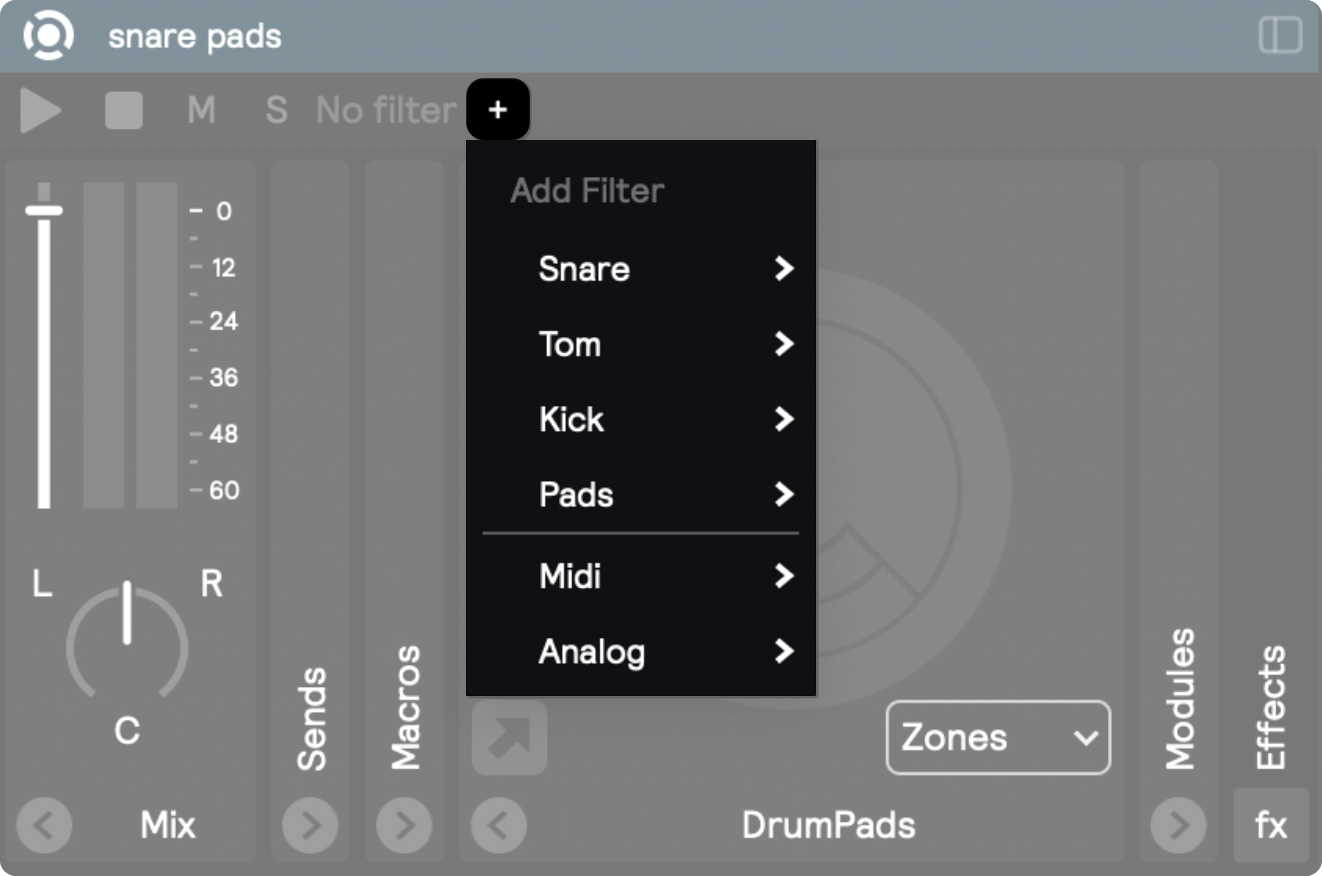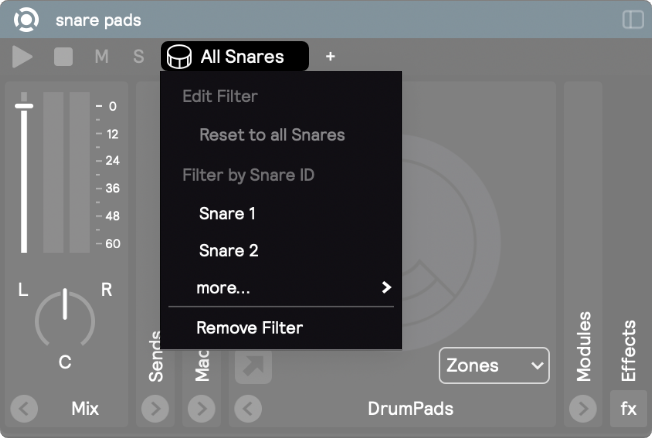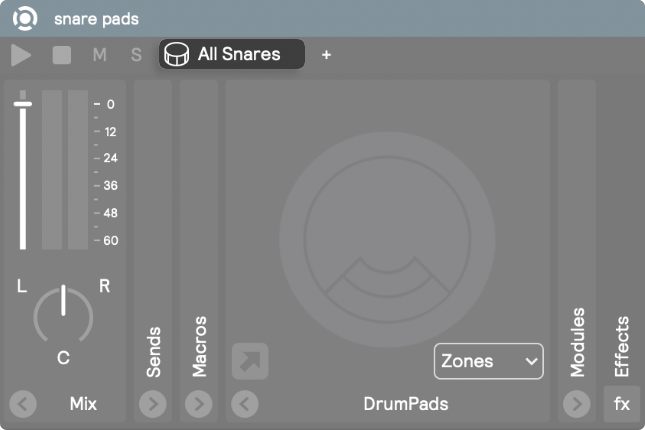Input Filtering
In Sensory Percussion V2, your hardware is decoupled from your virtual inputs, which allows you to work on the same session using entirely different setups (for example: your home studio setup and your stage setup). Additionally, there's an infinite world of connections between your virtual inputs and your modules.
To add an input filter to a module, simply click on the + sign and then select what type of filter you want to add.

If you then want to edit this existing filter, click on the filter itself to change it to another filter of that same type or remove it altogether.

Sometimes, you might want a specific drum or specific type of drum to control the module. For example, you might want any virtual snare drum you have in your set to control the sounds on snare drum pads.

Other times you may have two different virtual snares routed to different pad mappings.

In the image above, snare 1 is controlling the snare pads layer, while snare 2 is controlling the melodic sounds layer.
Input filtering allows you to distribute sounds across different drums without having to duplicate modules, saving you time, space, and CPU. For example, you might want both of your toms to share one sample in common, but also give each one its own additional layer of tom samples: one pitched up and one pitched down:

The image above shows a group module and all 3 of the samplers it contains: "Low digi tom," "High digi tom," and "disto tom". The first two samplers in the list have "Tom 1" and "Tom 2" input filters, respectively. But the third sampler has no input filter, which means it will inherit the "All Toms" input filter from the Group module it's inside of. That means that hitting either tom will play the "disto tom" sample, but only Tom 1 will play the low tom sample and only Tom 1 will play the high tom sample. This filtering concept also applies to longer chains of modules, not just individual samplers.